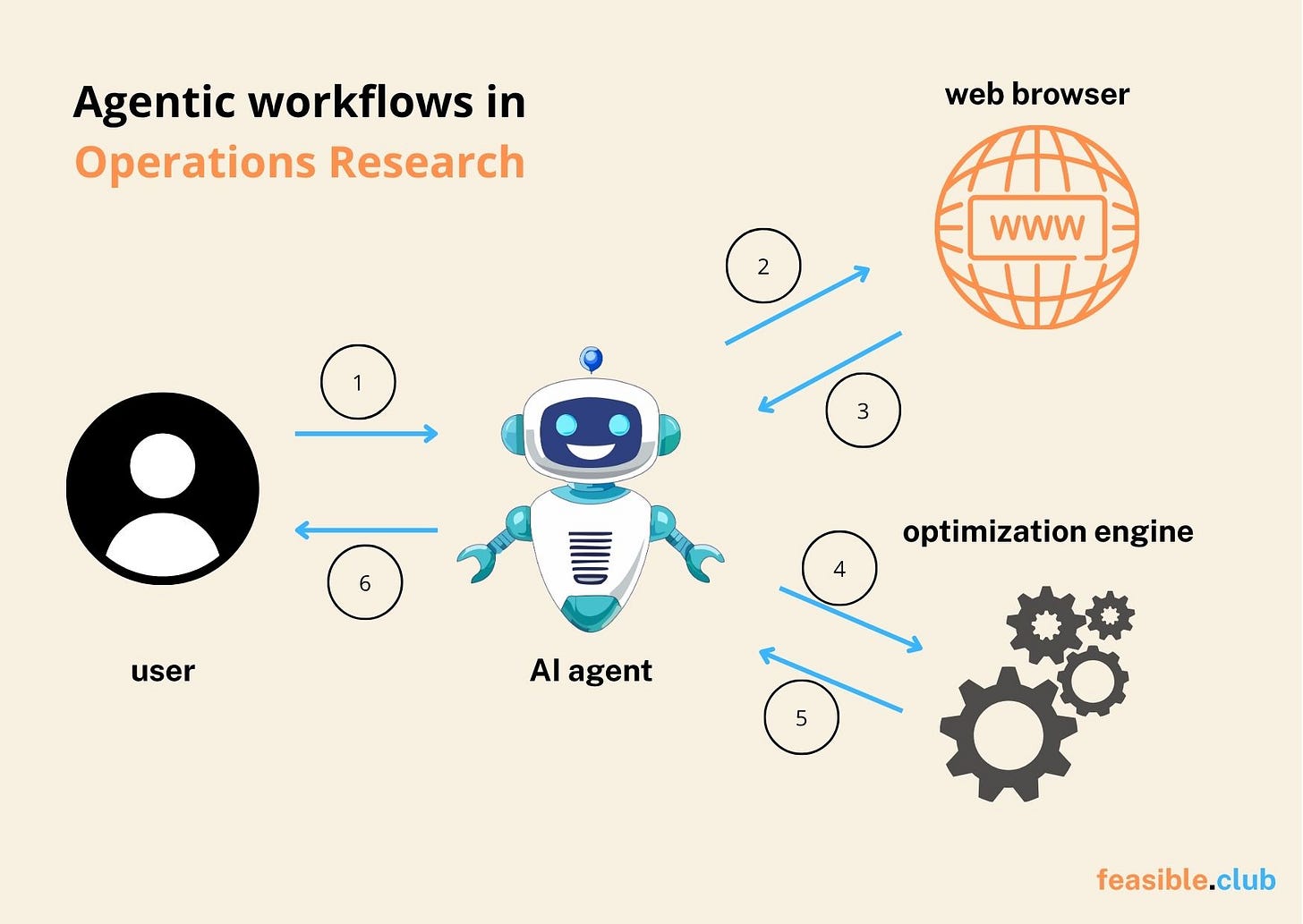📈 #95 OR isn't disappearing, it's becoming ambient
How AI is transforming Operations Research from a discipline into decision infrastructure.
Last time, we saw how vibe-coding changes how we work.
But AI agents might be about to change what work even is.
In Operations Research, that means decisions will move from being designed to being performed.
Automatically.
And that has consequences. Not only for our way of working, but for the field itself.
So today in Feasible we’ll cover:
🏎️ From batch to real-time decisions
😶🌫️ OR is growing, but becoming (even more) invisible
🛠️ OR will need more engineering discipline than ever
But before we jump into the topic:
Next Friday, I’ll be sharing one of my favorite projects at Trucksters, where we built Axis, a simulation and optimization tool that transformed how we plan our European routes, combining graph theory, heuristics, and CP-SAT optimization.
Axis has created a positive flywheel inside the company: improving decisions, reducing free capacity, and increasing margins 💸
If you’re curious about how optimization goes from model to margin, and what it takes to bring OR into production, join us at the EURO Practitioners’ Forum.
Now… Are you ready? Let’s dive in… 🪂
🏎️ From batch to real-time decisions
Imagine you’re a planner at 10:30 AM.
You open the planning tool and see there are 5 loads near Eindhoven for the next 6 hours.
You know there are some drivers ready to get the load on time, but you need to open three dashboards:
🚚 One for the available loads with all their information (loading time windows, exact location, trailer type).
📍 One for drivers, their location and their availability.
🗺 One for distances between drivers and loads.
And you see there are 7 available drivers.
You create a distance matrix among all locations (drivers and loads) and start assigning them so to minimize the total distance.
It’s second nature to any logistics business: empty kilometers are pure waste.
Then you start assigning drivers to loads, and after some iterations (as it wasn’t quite easy), you end up having 5 drivers assigned to those 5 loads. 15 minutes gone.
(BTW, this is the exact problem our planners had when I described the process to solve it here)
Instead of all that process, that repeats 10 times a day, every single day, we could have an agent that:
Retrieves all the information from the database (loads, drivers, distances).
Pass it to a specialized solver that minimizes empty km.
Return the solution in a human-readable style.
Mimicking what I did for solving the Queens game:
You could just replace the web browser MCP with a database MCP, and the solver MCP with the needed one for this use case. But the architecture and ideas remain the same. And the user just had to say “find me the drivers that minimize empty km to get the 5 loads around Eindhoven”.
You’d be solving an easy problem from the optimization perspective, but saving 13 of those 15 minutes for the planner. Multiply it by 10 as the planner repeats the process 10 times daily. More than 2 hours savings per day that can be used for other, more impactful actions.
You might be wondering this is just automation, and we’ve had APIs for decades.
The main difference here is that agents compose tools dynamically. A traditional system needs pre-programmed workflows. An agent can handle: “find drivers near Eindhoven OR Rotterdam if Eindhoven has less than 3” without anyone coding that logic explicitly. And without their explicit task of finding the information to feed the solver. They’re able to get natural language and translate it into proper instructions.
But even if we still need humans in the loop to verify all the process, we’d create agents taking those tasks autonomously, without any human intervention in the process of retrieving information and clicking a button after feeding a tool to get a solution.
And that might mark the beginning of a new era for Operations Research; one where we stop doing optimization, and optimization starts doing itself.
😶🌫️ OR is growing, but becoming (even more) invisible
We, as humans, are constantly solving decision problems.
If we want them to be properly solved, we need Operations Research techniques.
At the same time, AI agents are like gas: they’re expanding to fill every interface they can reach. And decisions will not be any exception to that.
Soon, OR will be the silent mechanism powering every autonomous workflow. Even if they’re not completely autonomous and you need a human in the loop to verify every step, OR will be diluted into the process.
💧 Like plumbing in our buildings.
🌐 Like TCP/IP for the internet.
🛰️ Like GPS for navigation.
OR will become their decision infrastructure: the invisible layer translating data into action.
Here’s the uncomfortable part:
Keep reading with a 7-day free trial
Subscribe to Feasible to keep reading this post and get 7 days of free access to the full post archives.




